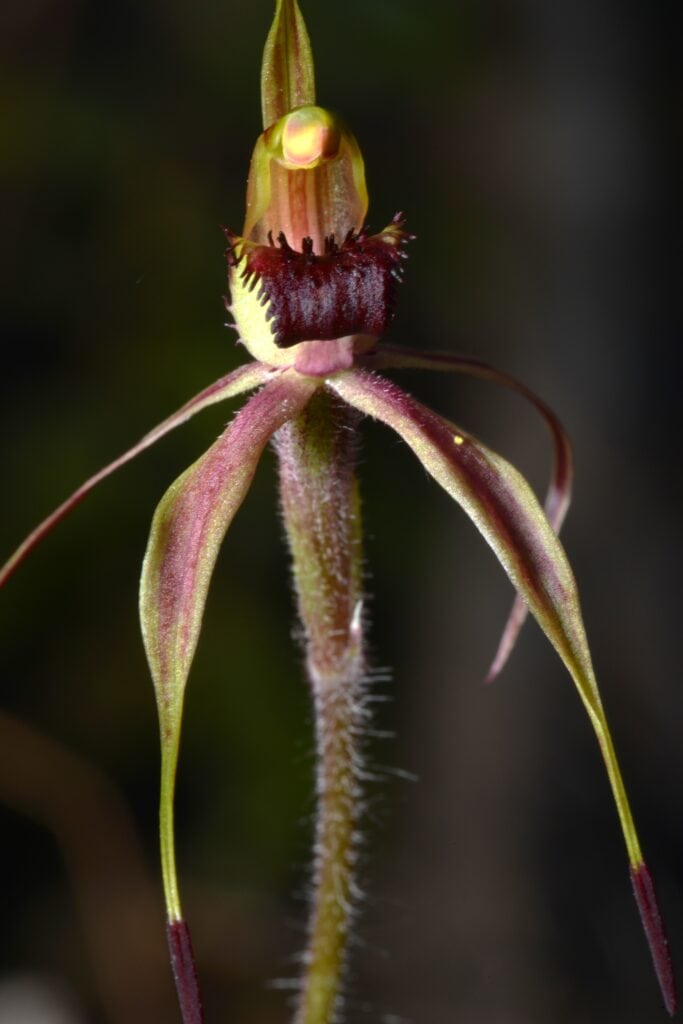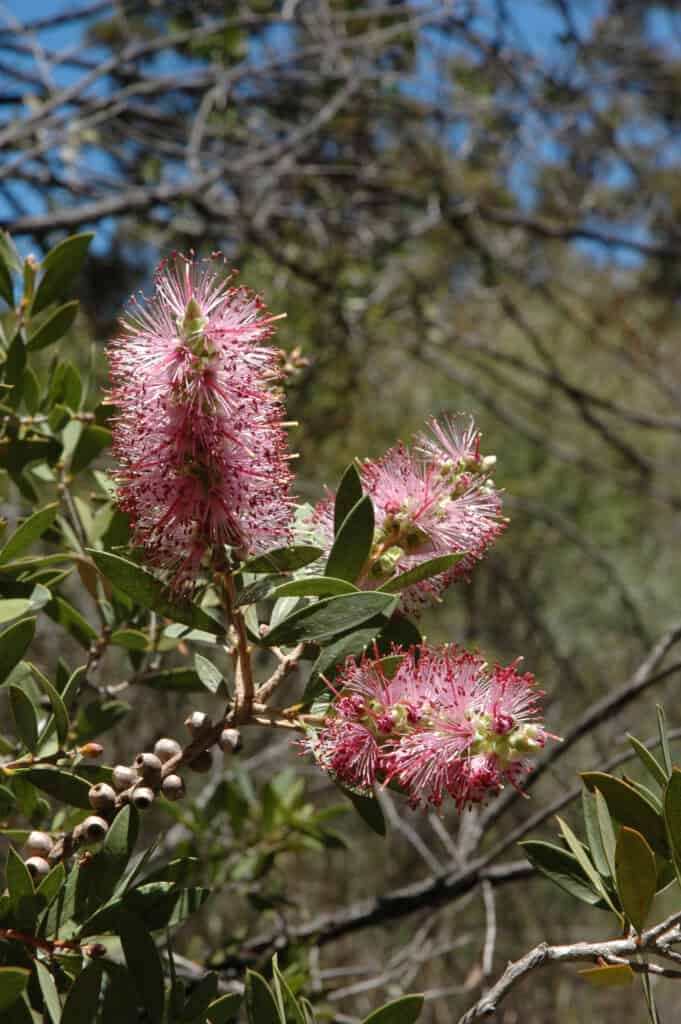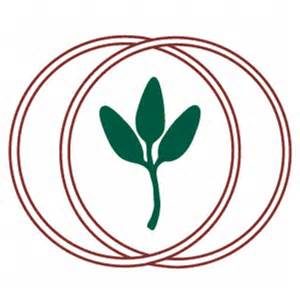QTPN Threatened Flora Surveys
Queensland is the most biodiverse state in Australia with over 14,000 species of native plants and plant-like species such as algae and lichens. Over 800 of these plants are listed as threatened (under the Queensland Nature Conservation Act and the federal Environment Protection and Biodiversity Conservation Act), making up 74% of all of Queensland’s threatened species. Many of these plants are poorly known and under-surveyed. Without baseline data on their population sizes and health, it is very difficult to implement strategic recovery actions and prevent their extinction.
The Queensland Threatened Plant Network (QTPN*) is undertaking targeted native flora surveys, according to Queensland Herbarium guidelines, to help fill some of these key gaps in our knowledge of Queensland’s threatened plants and assist in their long term management and monitoring.
Achievements to date
 Winter 2024
Winter 2024
With great support from Stanthorpe Rare Wildflower Consortium (SRWC) members and QPWS, QTPN conducted a population survey to support the Common Assessment Method nomination for the Rusty Desert Phebalium Phebalium glandulosum subsp. eglandulosum – a listed vulnerable species that was thought to be extinct in Queensland until its rediscovery by an amateur botanist in 2009. The area in Girraween National Park where this Phebalium occurs had been subjected to mixed intensity burns over the intervening 15 years, so it was great to discover 925 individual plants on site.
Spring 2024
QPWS, SRWC members and QTPN conducted a survey of the Black-clubbed Spider Orchid Caladenia atroclavia (EN) to assess the persistence of the main Girraween population (69 individuals recorded). This endangered orchid is endemic to Girraween National Park and adjacent lands. Consortium members noted that flowering occurred a full month early in 2024.
Survey Training Workshop participants at Rockhampton conducted a survey of an undescribed Comesperma sp. locating 20 individuals (<5 records existed for this species). A repeat survey almost 12 months later found only 12 individuals highlighting the ephemeral nature of some of our listed flora. This species is one of several threatened plants found on serpentine country, and currently requires listing.
Survey Training Workshop participants at Noosa conducted a survey of Bacon Wood Archidendron lovelliae (VU) locating >60 individuals. This vulnerable plant is found on coastal sands in rainforest communities from just north of Noosa to the Fraser Island region and has stunning pink-red and white flowers.
 Mooloolah Landcare Survey Training Workshop participants located 331 individuals of the Banished Stink Bush Zieria exsul (CR) at Sugarbag Recreational Reserve (194 individuals were found in the original survey by Sunshine Coast Council earlier in the same year).
Mooloolah Landcare Survey Training Workshop participants located 331 individuals of the Banished Stink Bush Zieria exsul (CR) at Sugarbag Recreational Reserve (194 individuals were found in the original survey by Sunshine Coast Council earlier in the same year).
As a result of a Survey Training Workshop at Currumbin, the local Friends of Parks group are going to set up regular population monitoring of the Stinking Laurel Cryptocarya foetida (VU) at Tallebudgera Creek Conservation Park.
Summer 2024/2025
QTPN worked with Noosa Regional Council and federal DCCEEW to conduct a population survey of Prostanthera spathulata (VU) on Mt Tinbeerwah (Sunshine Coast); alas only 5 individuals were found. However after this, the Council located >100 individuals on a private property to the south of the mountain, and a Flora Survey Workshop attendee surveyed her property (also on the mountain) and found an additional 20 plants!
QTPN visited a Nature Refuge on the Granite Belt to look at Homoranthus montanus (currently listed as Vulnerable, but likely to be reassessed) after 20 years since the last visit. The main population was looking impressive – a vibrant dark green characteristic of this species with quite a few in bud. Paul suspects this plant can resprout, though studies of other Homoranthus species indicate they are obligate seeders.
Autumn 2025
QTPN visited several Cyanothamnus inflexus subsp. inflexus sites on the Granite Belt to support a nomination for this species by the NSW Government. During the same trip, QTPN was able to visit several Melaleuca williamsii subsp. fletcheri (VU) populations to assess their extent and confirm their persistence post the 2019 fire season.
 After this, SRWC members surveyed some additional C. inflexus subsp. inflexus sites and located 489 individuals in the northern section of Passchendaele State Forest. The SRWC is really leading the way on the discovery of new populations of this and other listed species in this part of Southern Queensland.
After this, SRWC members surveyed some additional C. inflexus subsp. inflexus sites and located 489 individuals in the northern section of Passchendaele State Forest. The SRWC is really leading the way on the discovery of new populations of this and other listed species in this part of Southern Queensland.
As part of a Flora Survey Training workshop convened for the Nerang NP BioBlitz, a Rhodomyrtus psidioides (listed as Critically Endangered) population was surveyed on the southern edge of the National Park. 124 plants were found, and while many were small resprouts from root suckers, some individuals were 2m tall and showed little sign of Myrtle Rust impact.
Spring 2025
SRWC spring surveys produced incredibly valuable baseline data on local listed species, and discovered some new populations along the way:
- Boronia repanda (Endangered) on local private properties and Broadwater State Forest, with 444 individual plants located. Was thought to have a population of only 1000 individuals but the current known population now exceeds 11,000 plants!
- Zieria graniticola (Endangered) at Amiens State Forest with >520 individual plants found.
- Acacia ruppii (Endangered) 1 plant; C. inflexus subsp. inflexus 190 plants; Dodonaea hirsuta (Vulnerable) 100 plants.
- new populations of Acacia torringtonensis (Vulnerable) and identified two newcomers to the Granite Belt: Acacia aprepta and Acacia ixiophylla (both now with sizeable eastern range extensions).
QTPN surveyed:
- Zieria inexpectata (Endangered) on a road reserve east of Kingaroy and found 140 individual plants.
- Acacia argyrotricha (Vulnerable) in Yelarbon State Forest, 700+ individual plants were located.
- Westringia parviflora (Vulnerable) in Yelarbon State Forest and found 70 plants.
* The Queensland Threatened Plant Network (QTPN) was launched in March 2024 to facilitate a collaborative approach to threatened plant recovery in Queensland.
Contact QTPN Project Manager Paul Donatiu for more information.
Banner image: Boronia keysii flowers. Credit: Paul Donatiu
Other images from top: Phebalium glandulosum subsp. eglandulosum, Caladenia atroclavia, and Melaleuca williamsii subsp. fletcheri. Credits: Paul Donatiu
A panoramic view of the Homoranthus montanus survey site – Photo: Paul Donatiu
